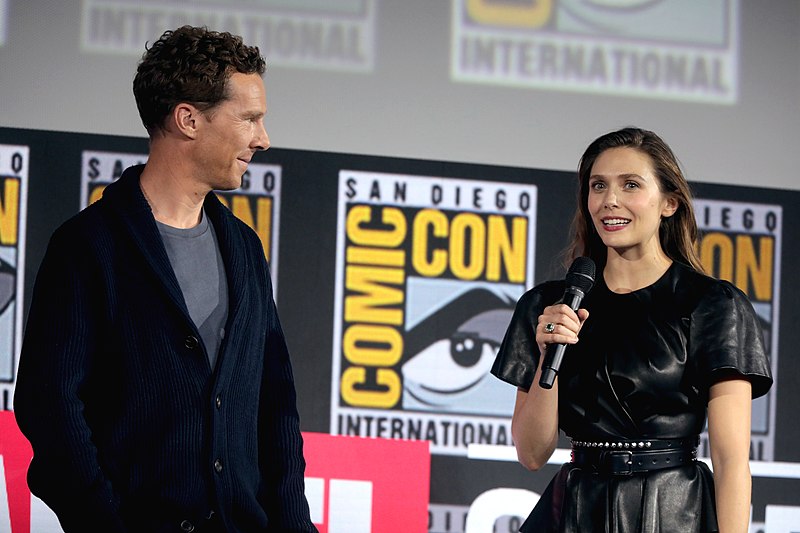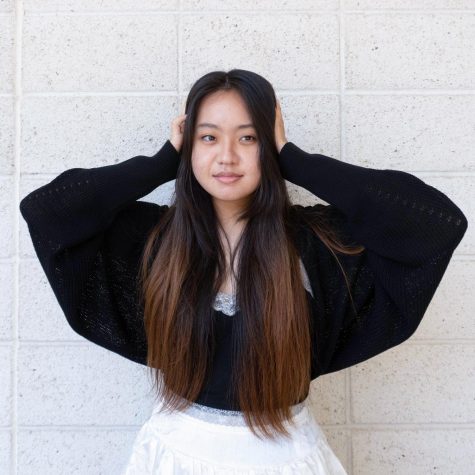‘Doctor Strange in the Multiverse of Madness’ Will Drive you Mad
Benedict Cumberbatch and Elizabeth Olsen, who play Dr. Strange and Wanda Maximoff respectively, attend the 2019 Comic-Con convention, when Marvel announced the “Doctor Strange” sequel as part of its phase four lineup. Since that initial announcement, the movie has faced significant production issues, including director turnover, multiple reshoots and a pandemic, which ultimately delayed the release date by a year, according to the Hollywood Reporter.
For as much as we would like to provide a brief summary of “Doctor Strange in the Multiverse of Madness,” doing so would cause…well, madness. Released May 6, it was one of Marvel Studios’ most anticipated films of the year, but it turned out to be Marvel’s most convoluted, demanding a suspension of belief and prior contextual knowledge that, as audience members, we simply could not give.
Director Sam Raimi is best known for the “Evil Dead” films, which combine grotesque imagery with slapstick comedy. As such, Raimi might appear to be the ideal visionary for Marvel Studios’ first cinematic foray into horror, but there is a clear tonal dissonance throughout the film, more egregious than in any other Marvel product. A scene depicting imploding heads or Wanda Maximoff’s blood-stained and crazed smile are followed by Marvel’s classic corny banter.
Never before did we think we would see a zombie version of Dr. Strange utter, “This time, it’s gonna take more than killing me to kill me!” before dashing into a battle that is supposed to determine the fate of the multiverse.
Marvel is proving itself to be formulaic in its delivery, even with its most unique plotlines. Not even a heavy dousing of nostalgia can redeem it.
At the core of the Marvel experience is the sense of reunion — and the films exploit it fully. In “Dr. Strange in the Multiverse of Madness,” we revisit past characters. Plenty of them. The film is full of references to previous films, some callbacks decades old like Mr. Fantastic from the Fantastic Four and Professor X from the X-Men. Disappointingly, these characters appear on screen for mere minutes, with not much contribution to the film.
We beg the question: What was the point of re-introducing them?
Meanwhile, key expository terms, like dream walking and Mount Wundagore, are thrown out with little explanation. Other aspects, like Dr. Strange’s dead sister Donna, are not elucidated at all. From the very first second of the film, audiences are catapulted into a confusing world that leaves them grasping for answers.
We beg the question: Where was the introduction of information?
Sure, the film could be enjoyable for the die-hard-all-things-Marvel fan, but for the more casual viewer it results in only gaped mouths. Prior knowledge of the Marvel franchise —films, television shows and comics— is necessary to understand character motivations and backgrounds, worldbuilding and even basic plot.
There were some positives. Marvel expanded BIPOC and LGBTQ+ representation with the introduction of America Chavez, played by Mexican-American actor Xochitl Gomez. America was raised by two moms, according to the 2011 comic series “Vengeance,” she is a lesbian herself; she wears a rainbow flag pinned on the lapel of her denim jacket.
Though the entire premise of the movie revolved around America, ironically, little attention was paid to her development. Marvel introduced America Chavez with few discernable traits and then remained static throughout the film, her character reduced to a helpless girl on the run who made the occasional “quirky” quip.
Unfortunately, even fan-favorite characters experienced similar lackluster characterization.
This is a Dr. Strange movie. Yet there is not much to say about his character besides that he is undoubtedly another crime-fighting superhero who does the right thing. He never shows enough hesitation to scare viewers into thinking that he will become entranced by dark magic, and he does not display as much regret with his life to constitute emotional growth.
At the very least, his crime-fighting is a fun spectacle of visual effects.
Wanda, who we watched grapple with grief and love in the Disney+ television series “WandaVision,” transforms immediately into her alter ego Scarlet Witch: a one-dimensional villain, supposedly the harbinger of Earth’s end, whose desire to reunite with her children is her only personality trait.
The Scarlet Witch’s goal of motherly redemption —which causes her to possess alternate versions of herself to find a universe where she can live happily with her children— is what drives the plot.
This version of Wanda has been possessed by dark magic, but it is disappointing, nonetheless, to see one of the most multi-faceted Marvel characters devolve, especially when there was so much potential to explore her as an anti-hero.
Christine Palmer, Dr. Strange’s love interest, spouts another source of ambiguity. Palmer is a key figure in Dr. Strange’s life — he shares his most “treasured” memories with Christine. Yet their relationship remains undefined: a plot that builds with little reward.
Our only hope is that in one of those various multiverses that Dr. Strange and America visited is a version of “Doctor Strange in the Multiverse of Madness” that is not as large of a letdown as our universe’s version ultimately is.
Your donation will support the student journalists of Portola High School. Your contribution will allow us to purchase equipment and cover our annual website hosting costs.

Charlotte Cao is the Features Editor for her third and, unfortunately, final year on the Pilot. Whether it be through the co-writing of stories or during...





